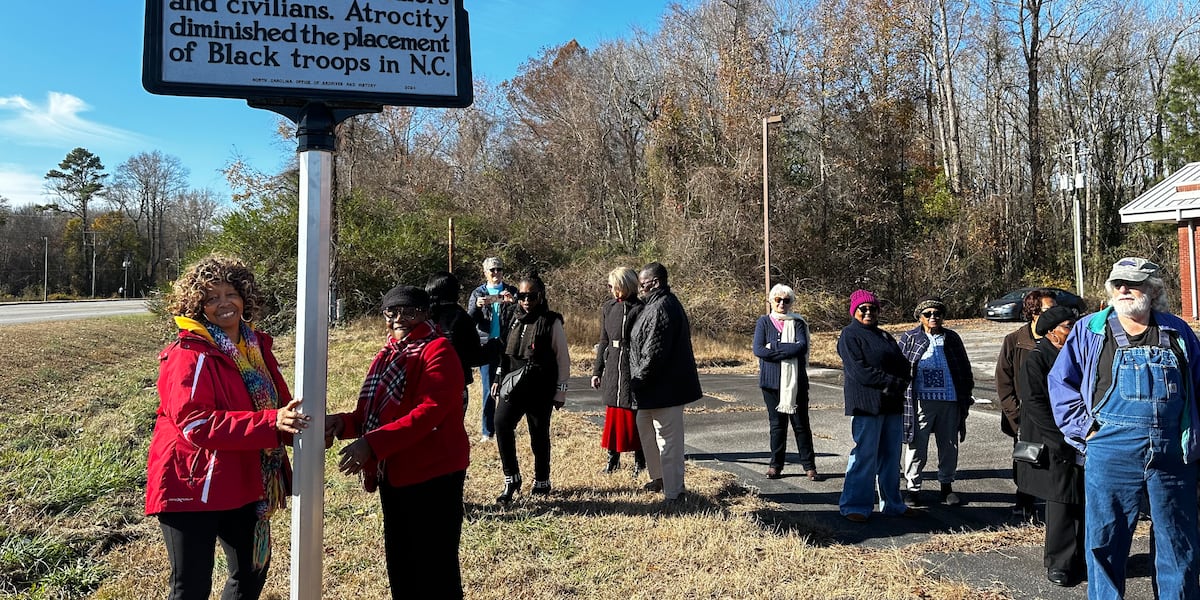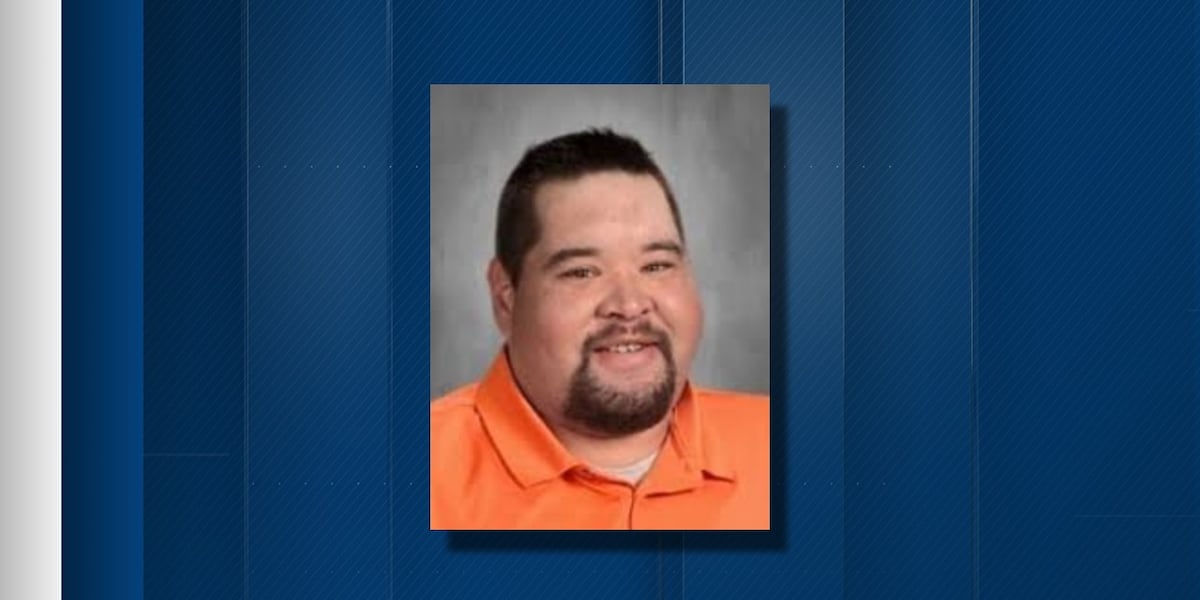North Dakota
A prominent North Dakota lawman first gained fame playing baseball

FARGO — Carey Ralph Wattles died too soon. He was just 51, and it happened 99 years ago July 5. The worldwide Spanish flu pandemic had been over for four years, even so, it’s what killed him.
While his years were short, Wattles packed a lot of living into his five decades – from baseball star to U.S. marshal.
Wattles was born June 16, 1873 in Elgin, Illinois, to Gilbert Wattles, a carpenter, and Eliza (Buck) Wattles, a housewife. By the time Carey was 7 years old, the family had moved north to Lake Wabasha, Minnesota.
He loved baseball and was good at it. When he was 22 years old and living in Montevideo, Minnesota, Wattles joined a semi-pro baseball team in Winona as a catcher and first baseman.
Small-town teams like Winona’s were becoming increasingly popular all over the Dakotas and Minnesota at the turn of the 20th century. Some games attracted more than 2,000 fans despite their very small ballfields.
Opponents were usually neighboring towns, and games were held as often as three or four times a week. But the season was short, usually not beginning until after farmers had planted their crops and ending prior to harvest.
By the 1890s, it became one of the most popular summer pastimes for people to watch and play all over the upper Midwest. Demand was high for players who could take time out of their lives to represent their town.
According to
a North Dakota Baseball blog,
“Having a winning team was seen as a source of community pride, and soon teams realized they needed to supplement their local players with outsiders to remain competitive with their rivals.”
So that meant local players like Wattles might be joined by young African American players coming in from all over the country. While many people associate integrated baseball with the Major League’s Jackie Robinson in 1947, Blacks and whites actually played together in amateur, minor league and semi-pro teams as early as the late 1800s.
Contributed / Waseca County Historical Society
In 1896, Wattles made news in Grand Forks for a salary dispute. At some point, he had been playing for a team in Crookston, Minnesota. According to the Grand Forks Herald, “the big first baseman” sued the ex-manager of the team for unpaid salary and expenses. The disputed amount? $25.95.
By 1900, Wattles was playing second base for a team in Waseca, Minnesota, where he was also given the title of “traveling manager,” perhaps fitting because of his “real” job as the travel passenger agent for Northern Pacific Railway.
Wattles was probably riding high around this time. His team had just won the championship of Iowa, Minnesota and South Dakota, and he met the woman he would eventually marry, Anna Joice.
The couple married in 1910 and made their way west to North Dakota where they had won a land lottery. They set up a farm near Devils Lake where he and Anna lived until 1914, when his life would take a dramatic turn.
At the center of the action
In April of 1914, Wattles was appointed deputy U.S. marshal for North Dakota. In 1919, he was promoted to chief deputy marshal. His name was mentioned in national newspapers because he arrested Kate O’Hare in Devils Lakes in the summer of 1917 for allegedly violating the Espionage Act for delivering an anti-war speech in Bowman, North Dakota.
Despite O’Hare being convicted and sentenced to federal prison, it appears she held no ill will toward the man who arrested her.
Jayne Joyce-Staley, the great-niece of Anna Wattles, found a letter that O’Hare sent to her husband in April 1919, where she states: “You might send a copy to Mr. Wattles and thank him for his kindness and courtesy to me.”
O’Hare was eventually pardoned in 1920 and released from prison.

Contributed / Waseca County Historical Society
Wattles worked for another five years following the O’Hare case. He was as busy as he had ever been with numerous newspaper reports of his arrests and court cases in the early 1920s.
But in late June of 1924, he began to feel sick. In just a week he died from influenza in the couple’s apartment above what is now Power Plate Meals in downtown Fargo.
He was buried in Minneapolis alongside his parents. Anna Wattles stayed in Fargo through the 1930s, working as a clerk and saleswoman for Kaybee Store. The couple did not have children. She never remarried and eventually moved to Minneapolis. She died in 1951 and is buried in Waseca, the place she first met her husband, the baseball player turned lawman.
A special thanks to Jayne Joyce-Staley for contacting me to tell this story from her family history.
Tracy Briggs is an Emmy-nominated News, Lifestyle and History reporter with Forum Communications with more than 35 years of experience, in broadcast, print and digital journalism.

North Dakota
North Dakota Outdoors: Look back at ND spearfishing

Submitted Photo
Decoying a pike isn’t the same as decoying ducks or holding a draw on a deer. Photo by Ashley Peterson, NDGF.
Have you ever been darkhouse spearfishing for pike? It’s relatively new compared to most outdoor recreation, having started a mere 25 years ago, but for those who have taken the opportunity it’s hard to compare.
I remember the first time I went spearfishing at Spiritwood Lake. Sitting still in a darkhouse was like nothing I’d ever done before. I’m no expert but when the first northern drifted into the decoy as I sat undetected, I locked up. Not surprisingly, I missed it.
Maybe it’s close to the thrill of calling turkeys into a decoy? Others might describe the rush like sitting undetected in a tree stand archery hunting for deer. I can attest it’s a rush of its own unique draw.
Decoying a pike isn’t the same as decoying ducks or holding a draw on a deer. None of those take place in the middle of a frozen lake with nothing but ice and cold water between you and the pike.
If you’ve ever watched a pike come in and attack a decoy, it’s incomparable. To get to that point is not easy. The combination of cold, snow and dark could be why the popularity of darkhouse spearfishing hasn’t, and likely never will, rival the sun, waves and water of summer fishing?
Looking at last year’s spearfishing statistics prove how a warmer winter with poor ice conditions results in lower participation and success.
Greg Power fisheries division chief highlights a few notes:
– 3,109 individuals registered – 2,018 residents, 1,091 nonresidents from 29 states including 716 from Minnesota (23%); despite an open winter, the number of registrants were similar to the previous winter, which was greatly impacted by extreme cold weather and snowfall.
– 9,181 northern pike were harvested, the lowest number since 2010-11 and less than one-third of that harvested in 2017-18 (the record year).
– Average spearer was 42.8 years old and 88% were male.
– Survey respondents indicated participation in DHSF on a record 138 water bodies (up 32 from 2021-22).
– DHSF effort of the top 15 lakes accounted for nearly 75% of the effort with Sakakawea accounting for about 35% of the total effort (which basically equaled the effort of the next 10 water bodies).
– Top 14 lakes accounted for more than 73% of the DHSF pike harvest with Sakakawea accounting for 28% of the total harvest. The top four waters (Sakakawea, Devils Lake, Twin (LaMoure) and Horsehead lakes) accounted for 56% of the total pike harvest.
– Median and mean weights of the largest pike reported harvested by respondents were 10 and 10.5 pounds respectively. These metrics are the highest ever recorded.
– 2022-23 was the first winter that the taking of walleye (in addition to pike and rough fish) during DHSF was legal for Devils Lake, Stump Lake and the Missouri River System including lakes Sakakawea and Oahe. For this past winter (23-24), the following number of spearers harvested the following number of walleye: Sakakawea (88 spearers and 218 walleye), Devils Lake (26 spearers and 54 walleye), Missouri River (three spearers and three walleye) and Stump Lake(one spearer and one walleye).
2024-25 ND darkhouse spearing
Individuals required to possess a valid fishing license (age 16 and older) to darkhouse spearfish must first register online at the North Dakota Game and Fish Department website, gf.nd.gov.
Darkhouse spearing is allowed for all anglers with a valid fishing license and for youth under age 16.
Northern pike and nongame fish are the only legal species statewide, while walleye can be speared at Stump Lake and the Devils Lake complex south of U.S. Highway 2 and the Missouri River System (including lakes Oahe and Sakakawea and the Missouri River) up to the first tributary bridge.
Spearers and anglers are reminded that materials used to mark holes must be in possession as soon as a hole greater than 10 inches in diameter is made in the ice.
Registration and full details can be found on the Game and Fish Department’s website.
North Dakota
Nelson County farmer credited with saving men from freezing to death after crash

MCVILLE, N.D. — Nobody knows the land around North Dakota better than farmers, and that knowledge proved critical after a bizarre car crash in Nelson County.
Sheriff Kurt Schwind said an unnamed farmer’s help was lifesaving after rescue crews called off an initial search for the occupants of the vehicle and nearly halted a second one.
If the second search had been called off, Schwind said, two men likely would have frozen to death.
County dispatch received the call about the crash around 6 a.m. on Dec. 9; the caller became disconnected.
“Says he was sleeping, he was in the car with a couple guys, he was sleeping, woke up they were gone, the vehicle was crashed so he started walking,” Schwind said.
The call came from a refurbished phone, so officers were not able to call the person back, but a cellphone ping brought them to the farmstead.
Bodycam footage obtained by WDAY shows a Nelson County sheriff’s deputy talking with the farmer, who was curious about all of the police activity on his property.
After searching for about an hour and a half, police called off the search until sunrise.
“It was so dark and we had some blowing snow and stuff like that, so it was really hard to see anything at that point,” Schwind said.
When the sheriff returned after sunrise, the farmer showed him something.
“That’s when the landowner realized that this gate had been broken through,” Schwind said.
The tracks the farmer and police followed for a half-mile through a cow pasture were still visible days later. A wire fence was also driven through. It led investigators to the top of a ravine, and several hundred feet below, they spotted a four-door car.
“How they got through there with that BMW is amazing, because we had to use four-wheel drive, and we struggled getting down there,” Schwind said.
At about the same time, Schwind found the man who called 911. He had climbed the ravine and sought shelter in some hay. He had no shoes or coat. He told police he was alone.
“He was in bad shape. As soon as I got him into my vehicle, he had uncontrollable shivering; he was very incoherent,” Schwind said.
As the sheriff raced the man to the hospital, the farmer, who had stayed at the top of the ravine, made another key discovery.
“He got his binoculars out and saw him sitting in the trees,” Schwind said of another man.
It took rescue crews nearly an hour to rescue the second man. According to WDAY StormTRACKER meteorologists, the wind chill was below zero.
“I think if the landowner wouldn’t have met me back over here, that we would have been recovering as opposed to finding,” Schwind said.
The sheriff said the men were traveling from Grand Forks to Devils Lake, but it’s unclear how long they were in the ravine and how they ended up several miles off the main road.
“They both had phones that had charges left in them,” Schwind said. “For some reason, they didn’t call — they only called that one time and didn’t call again.”
While WDAY News was talking with the sheriff for this story, a deputy found a jacket, boots and phone a couple hundred feet from where the first man was found in the hay. What looked like methamphetamine was found in a pill container in the jacket pocket.
The Nelson County Sheriff’s Office plans on presenting the farmer with an award for his lifesaving help.
The Sheriff’s Office is still investigating to determine if the men will face charges.
McVille is about 67 miles southwest of Grand Forks.
Matt Henson is an Emmy award-winning reporter/photographer/editor for WDAY. Prior to joining WDAY in 2019, Matt was the main anchor at WDAZ in Grand Forks for four years.
North Dakota
North Dakota sets new population record as state approaches 800,000 residents

BISMARCK — North Dakota’s population count is gaining momentum as it reaches a record of 796,568 in 2024, an increase of over 7,500 people since last year and more than 2% since 2020, according to census data.
According to population estimates released Thursday, Dec. 19, by the
U.S. Census Bureau,
Cass County exceeded the 200,000-resident mark by 945 people and Burleigh County hovered over 100,000 residents with a count of 103,107.
The two counties combined accounted for over 58% of the state’s growth in the last year.
“People continue to discover North Dakota’s abundant job opportunities, low taxes, strong education and health care systems, and unmatched quality of life with world-class outdoor recreation, hunting and fishing,” Gov. Kelly Armstrong said in a Thursday release.
The release also noted a net population increase of more than 18% since 2010, calling North Dakota one of the fastest-growing states in the country, though the Midwest overall had the lowest net population increase.
Contributed / U.S. Census Bureau
Most of the 43 states that grew in 2024 were southern states.
North Dakota’s population rise is part of a nationwide trend the Census Bureau attributes broadly to international migration and “natural increase” — when births outnumber deaths.
North Dakota had a natural increase of 2,725, with 6,867 deaths and 9,592 births in 2024.
While the state lost nearly 300 people to domestic migration, it gained 5,126 people by international migration for a net gain of 4,835 people moving into the state in 2024.

Contributed / U.S. Census Bureau
The U.S. population surpassed 340 million and grew by nearly a full percent between 2023 and 2024, the highest growth in decades, according to U.S. Census Bureau data. Nearly 84% of the nation’s 3.3 million new residents are associated with international migration.
Natural increase accounted for about 15.6% of national growth in the U.S. in 2024, with 519,000 more births than deaths — up from the historic low in 2021 when births outpaced deaths by 146,000.
“An annual growth rate of 1.0% is higher than what we’ve seen over recent years but well within historical norms,” Census Bureau Demographer Kristie Wilder
said in a Thursday release.
“What stands out is the diminishing role of natural increase over the last five years, as net international migration has become the primary driver of the nation’s growth.”
Since the last Census release, the bureau adjusted its migration estimate to account for a “notable” increase in “non-U.S.-born immigration” — the number of refugees, people released by U.S. Border Patrol and by those held on parole by the U.S. Customs and Border Protection Office of Field Operations.
As a result, the 2024 international migration totals appear inflated in retrospective comparison to totals from previous years.
North Dakota officials see “legal immigration” as an opportunity to address statewide workforce shortages,
as recent population growth isn’t enough to fill the state’s nearly 30,000 job vacancies.
“We look forward to working with the state Legislature in the upcoming session to set North Dakota up for even greater success and population growth, including addressing much-needed property tax reform and relief,” Armstrong said in the Thursday release.
-

 Politics7 days ago
Politics7 days agoCanadian premier threatens to cut off energy imports to US if Trump imposes tariff on country
-
/cdn.vox-cdn.com/uploads/chorus_asset/file/25782636/247422_ChatGPT_anniversary_CVirginia.jpg)
/cdn.vox-cdn.com/uploads/chorus_asset/file/25782636/247422_ChatGPT_anniversary_CVirginia.jpg) Technology1 week ago
Technology1 week agoInside the launch — and future — of ChatGPT
-
/cdn.vox-cdn.com/uploads/chorus_asset/file/25789444/1258459915.jpg)
/cdn.vox-cdn.com/uploads/chorus_asset/file/25789444/1258459915.jpg) Technology6 days ago
Technology6 days agoOpenAI cofounder Ilya Sutskever says the way AI is built is about to change
-

 Politics6 days ago
Politics6 days agoU.S. Supreme Court will decide if oil industry may sue to block California's zero-emissions goal
-
/cdn.vox-cdn.com/uploads/chorus_asset/file/25546252/STK169_Mark_Zuckerburg_CVIRGINIA_D.jpg)
/cdn.vox-cdn.com/uploads/chorus_asset/file/25546252/STK169_Mark_Zuckerburg_CVIRGINIA_D.jpg) Technology7 days ago
Technology7 days agoMeta asks the US government to block OpenAI’s switch to a for-profit
-

 Politics1 week ago
Politics1 week agoConservative group debuts major ad buy in key senators' states as 'soft appeal' for Hegseth, Gabbard, Patel
-

 Business5 days ago
Business5 days agoFreddie Freeman's World Series walk-off grand slam baseball sells at auction for $1.56 million
-
/cdn.vox-cdn.com/uploads/chorus_asset/file/23951353/STK043_VRG_Illo_N_Barclay_3_Meta.jpg)
/cdn.vox-cdn.com/uploads/chorus_asset/file/23951353/STK043_VRG_Illo_N_Barclay_3_Meta.jpg) Technology5 days ago
Technology5 days agoMeta’s Instagram boss: who posted something matters more in the AI age






















